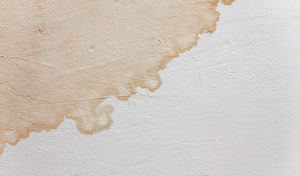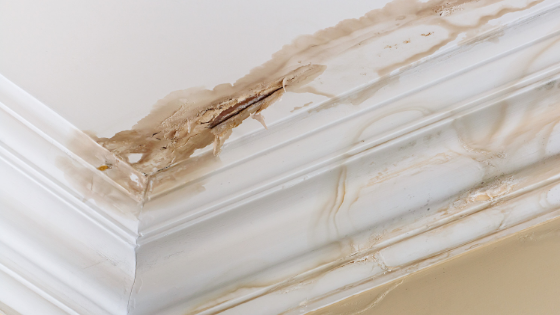Combat Water Stains On Walls - Guidance For Detection And Fixing
Combat Water Stains On Walls - Guidance For Detection And Fixing
Blog Article
Are you currently in search of critical information about Water Stains on Walls?

Water stains on wall surfaces are not pleasurable to the eyes. Your residence must be without discolorations on the walls, roof, or floorings. That is the optimal state of a home as well as its structures. Yet, occasionally it seems virtually unavoidable to experience water stains on walls in houses.
Homeowners staying in humid areas constantly take care of the fear of water spots on wall surfaces. That does not have to be the case for you. With well-shaped and precise information on the root causes of water discolorations and timely repair work procedures, you will always be an action ahead of such occurrences. So, this short article assures to be a helpful guide for you.
3 Typical Root Causes Of Water Spots on Wall Surfaces
Unlike popular belief, water stains on walls do not always come from inadequate structure products. There are numerous causes of water stains on walls. These include:
Moist
When warm wet air meets completely dry cool air, it creates water droplets to form on the walls of buildings. This occurs in restrooms as well as kitchen areas when there is steam from cooking or showers. The water droplets can stain the surrounding walls in these parts of your residence and also infect various other locations.
Moist or condensation impacts the roofing as well as walls of buildings. This causes them to appear darker than other locations of the residence. When the wall surface is wet, it develops an appropriate atmosphere for the growth of fungis and also microorganisms. These may have unfavorable effects on health, such as allergic reactions and also breathing conditions.
Poor Water drainage
When making a building strategy, it is essential to make certain sufficient water drainage. This will stop water from seeping right into the walls. Where the drain system is obstructed or nonexistent, below ground moisture develops. This web links to excessive moisture that you notice on the walls of your structure.
So, the leading cause of damp walls, in this situation, can be an inadequate drain system. It can likewise result from poor monitoring of sewage pipes that go through the building.
Pipe Leaks
The majority of homes have a network of pipes within the wall surfaces. This guarantees that the pipelines are well away from the reach of damaging rats. It always enhances the stability of such pipes, as there is little oxygen within the walls. This inhibits corrosion.
Yet, a downside to this is that water leakage impacts the wall surfaces of the building and triggers prevalent damage. An indication of malfunctioning pipelines is the appearance of a water stain on the wall.
Pro Idea
A houseplant in your house additionally increases its humidity. If the home is currently moist, you might desire to introduce houseplants with minimal transpiration. An example of appropriate houseplants is succulents.
Water Spots on Wall Surface: Repair Service Tips
Home owners would usually desire a quick fix when managing water stains. They would soon recognize this is detrimental as the water spots repeat. Here are a few helpful tips that will certainly lead you in the fixing of water discolorations on wall surfaces:
Conclusion
Although no person wishes to have water spots on walls in their home, it can take place to the very best of us. This article offers you take advantage of, as you now recognize exactly how to handle this incident if it does occur.
It is constantly best to hire professional solutions to assist fix the problems in your home.
Occasionally it appears almost unpreventable to experience water spots on walls in houses.
Contrary to popular idea, water spots on walls do not always stem from poor structure products. There are a number of causes of water discolorations on wall surfaces. The water droplets can stain the surrounding wall surfaces in these components of your home and spread to various other locations.
Right here are a few helpful pointers that will certainly direct you in the repair of water discolorations on wall surfaces:
CHECKING FOR WATER DAMAGE
Water damage can be costly, and it may begin before you even notice the first signs of trouble. Water damage can cause mold and mildew in your walls and floors, which can create an abundance of health concerns for your family. It can also lead to costly repairs of various appliances and general home fixtures. To avoid the pricey consequences of water damage, here are Warner Service’s top 5 places you should check:
The walls – The easiest place to spot the beginnings of water damage is on the walls and ceilings of your home. If water damage is present, there will most likely be water stains, especially around the windows and doorframes, and/or cracks in the drywall. If a stain looks unusual (discolored to brown, black or gray, raised texture), has a swollen appearance or is soft to the touch, contact a professional immediately. The pipes – To avoid water damage, consistently check the pipes in your kitchen (especially the dishwasher and ice maker), bathrooms, laundry room (specifically washing machines) and basement for corrosion, leaks and water stains. Pay special attention to where the pipes connect in your home and the location of caulking around the bathroom fixtures, including toilets, sinks, showers and tubs. Missing or loose caulking and grout could be signs of leaking water. This seepage can also quickly cause mold and rust, so double check your water heater and tank for wet spots on the floor. The floor – Water damage is very easy to spot on the floor. Look for any warping or buckling of the material, especially in the basement. If your home has wood flooring, look for bright white or dark stains. If your home has carpeting, keep it dry and clean. A damp carpet that smells of mold could cause water damage and health problems. To avoid this, consider installing floor pans under your appliances to help prevent damages from small, slow and undetected leaks. The basement and attic – If your basement or attic smells odd check for mold and mildew around the area, especially the valley where the roof meets. While you are inspecting those areas, check for wall cracks, floor stains, rust and dampness in the insulation. If you live in a colder and/or rainier climate, perform routine checks for water damage from melting snow or ice and rain. The exterior – Check the roof for damaged flashing and missing, cracked or curled shingles. There should also be no standing water anywhere outside your home. This could be caused by puddles, leaky rain gutters or hoses, poor drainage, or short gutter spouts. Invest in a sump pump system or water flow monitoring system, and perform routine maintenance on these outdoor appliances to avoid indoor water damage.

I recently found that review on Indicators of Water Damage Behind Walls when doing a lookup on the search engines. Do you know about another individual who is fascinated with the subject? Do not hesitate to share it. Thanks so much for taking the time to read it.
Schedule Services
Report this page